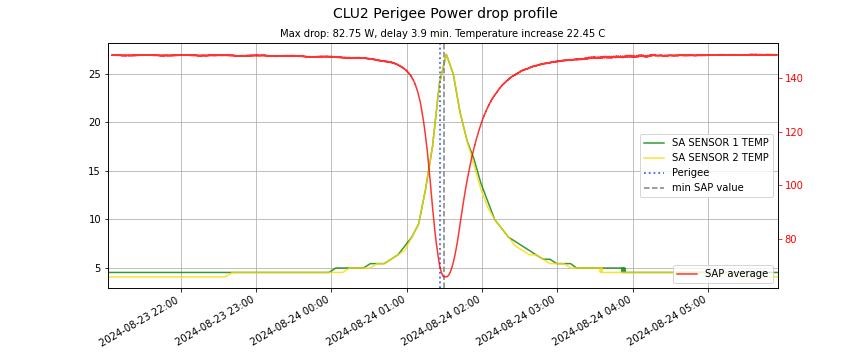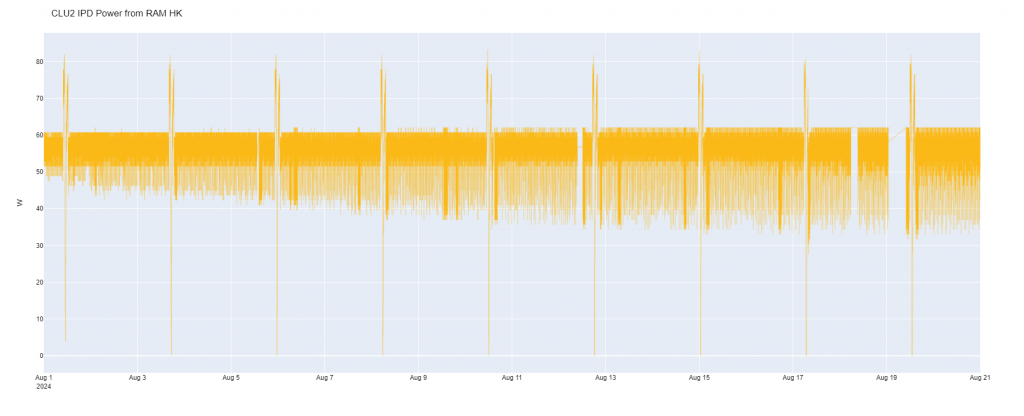ESA’s Cluster mission is coming to an end, with the first of the mission’s four satellites, nicknamed Salsa (formally ‘Cluster 2’), scheduled to reenter Earth’s atmosphere on 8 September.
As Salsa’s altitude has decreased, it has begun to face a phenomenon known as a ‘perigee power drop.’ This occurs when the satellite is at its closest point to Earth in its orbit, called perigee. Here, the thermal radiation emitted by Earth causes the satellite’s solar arrays to heat up, reducing their efficiency and significantly lowering the amount of power that they can generate.

Under normal circumstances, a satellite’s batteries would compensate for such a power deficit. However, Salsa and its fellow Cluster satellites have long surpassed their expected operational lifetimes, resulting in depleted batteries that can no longer store or provide backup power. Salsa therefore relies entirely on its solar arrays for energy at all times.
To cope with these power drops, Salsa was reconfigured to operate at minimal power during perigee, essentially limiting its functions to only its onboard computer. The Cluster team anticipate that Salsa’s solar arrays will eventually fail to generate enough power to maintain even this basic operation as the spacecraft gets closer and closer to Earth during perigee.
Yet, despite all expectations, Salsa’s computer continues to function during perigee, even when power production drops to the bare minimum required to keep it running, with not a single watt to spare. Salsa’s resilience has impressed the mission team, who theorise that the spacecraft’s onboard capacitors might be storing just enough energy to keep the computer functioning through critical moments.

However, the team remains uncertain about how much longer Salsa can endure under these conditions. The spacecraft has already survived around a dozen perigees during which its spare power has dropped to zero watts for up to 13 minutes.
Salsa’s reentry was set in motion in January 2024. The spacecraft will reenter Earth’s atmosphere over the South Pacific Ocean Uninhabited Area on 8 September. The perigee power drop was anticipated and will not affect the spacecraft’s descent.
Once Salsa is no longer able to operate during perigee, Cluster’s control team will transition to a more intense phase of operations, during which they will switch the spacecraft off entirely during the perigee phase of each orbit, as they do during an eclipse.

Discussion: no comments